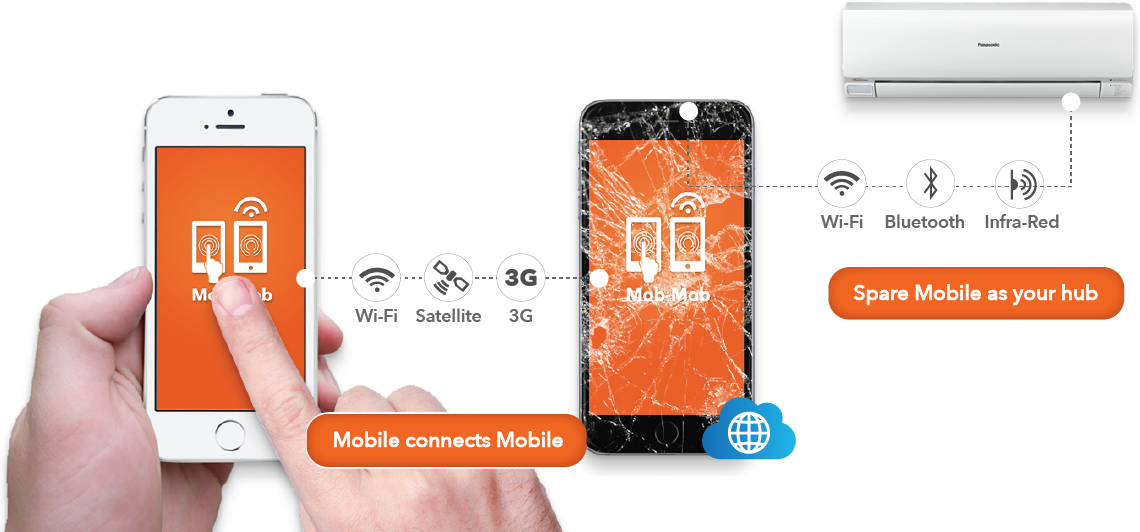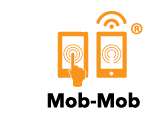Technology - Bluetooth to Cloud
In December 2014, the Bluetooth SIG released version 4.2 of the Bluetooth core specification and a number of important new profiles. SIG made Bluetooth Smart both smarter and faster while adding important capabilities aimed at IoT scenarios. They defined and standardized the ways in which the Bluetooth Smart IoT edge tier can connect and communicate with the Internet and with IP-based devices in general. Following are the key new features:
1. Discovering And Communicating With Bluetooth Smart Devices Using HTTP
The first of the new features is the ability to discover, access, and control any Bluetooth Smart device, securely from the Internet using standard HTTP.
Imagine living in a Smart Home. You have Bluetooth Smart locks and sensors on all your doors and windows and each can indicate the state of a door or window - locked or unlocked, open or closed. From a mobile application or web browser, you will be able to securely review the status of all the Bluetooth devices in your home, wherever you are in the world using a standard Internet connection. The same principle applies to any Bluetooth Smart device be it a lock, a light bulb or a smart plant pot!
 Figure 1. Smart Home with Bluetooth Smart Gateway
Figure 1. Smart Home with Bluetooth Smart Gateway
To accomplish this, the SIG’s Bluetooth Internet Working Group defined a series of standard RESTful APIs relating to both Bluetooth GAP (Generic Access Profile) and GATT (Generic Attribute Profile). One way in which you’ll see these APIs implemented is in a type of device we call a “gateway.” In real terms, the gateway feature is embedded in devices such as a broadband router or a Smart TV.
To start, all you need is a gateway device that supports the new APIs. The other Bluetooth Smart devices can use any version of Bluetooth Smart - 4.0, 4.1 or 4.2 - so all of your existing devices will become remotely, securely accessible once you’ve equipped your home with the new gateway capability. Since you are using Bluetooth Smart, you can control all of these devices directly from your phone, tablet, or PC as well without going through a gateway when you are in your home.
2. Bluetooth Smart Devices And Web Services In The Cloud
The second IoT feature relates to a new GATT service called the HTTP Proxy Service (HPS). The specification for HPS will be available in Q1 2015. With HPS, manufacturers can give Bluetooth Smart devices the ability to “reach out” and communicate with standard web servers in the cloud. For example, you could have temperature sensors positioned all around your Smart Home reporting temperature readings to a cloud-based energy efficiency service.
 Figure 2. HPS Architecture
Figure 2. HPS Architecture
Figure 2 depicts the overall HPS architecture. Devices such as our example temperature sensor implement the HPS client component, while a Bluetooth Internet gateway (implemented in a router) contains the HPS service. The availability of the HPS service in the router is indicated to potential clients using standard GAP procedures. The temperature sensor indicates the target URL, HTTP header values and HTTP operations it wants to invoke, to the HPS service by writing to the various GATT characteristics that the HPS service contains. HTTP operations HEAD, GET, POST, PUT and DELETE are all supported and either HTTP or HTTPS may be specified. When an HTTP operation is complete, the HPS service sends a GATT notification relating to a HTTP Status Code GATT characteristic back to the HPS client in the temperature sensor.
HPS may also be exposed over Bluetooth BR/EDR, and to that end, has a Service Discovery Protocol record defined for it.
3. Bluetooth And IPv6
The third and final feature is called the Internet Protocol Support Profile (IPSP). IPSP makes it possible for a Bluetooth Smart device to support 6LoWPAN (IPv6 over Low power Wireless Personal Area Networks) and to have an IPv6 address. In short, this means that IP packets can be sent and received by Bluetooth Smart devices, in addition to retaining their core Bluetooth Smart capabilities.
The groundwork for this radical new capability was laid down in Bluetooth 4.1 where we introduced support for fixed, connection oriented L2CAP (Logical Link Control and Adaptation Protocol) channels.
 Figure 3. Bluetooth and 6LoWPAN
Figure 3. Bluetooth and 6LoWPAN
The RESTFul API and HPS features I’ve talked about are both based upon HTTP which is generally a good choice for many use cases. It’s very comquite simple and widely understood. But it’s not the best protocol for all use cases. IPSP allows devices to use other protocols and to communicate with other smart objects that do not use Bluetooth at all but do support IP.
It’s Game on for the Internet of Things
All of these features are genuinely “game changing.” Taken in conjunction with the other changes in 4.2, Bluetooth Smart now offers an ultra-low power wireless networking capability, with FIPS-compliant security features and standardized mechanisms for integrating small wireless devices which will often be equipped with sensors, with the Internet, and other IP devices in a whole range of ways—and it’s natively supported by almost all smartphones on the planet.
With Bluetooth 4.2, it really is “game on” for the IoT!
For Yoswit, we provide 2 major solutions for you to connect our products via internet
Mob Mob


Patented

Free of Charge
Yoswit Bluetooth Gateway


$49.9 (Coming Soon)
Specialized in Smart Light Switches








